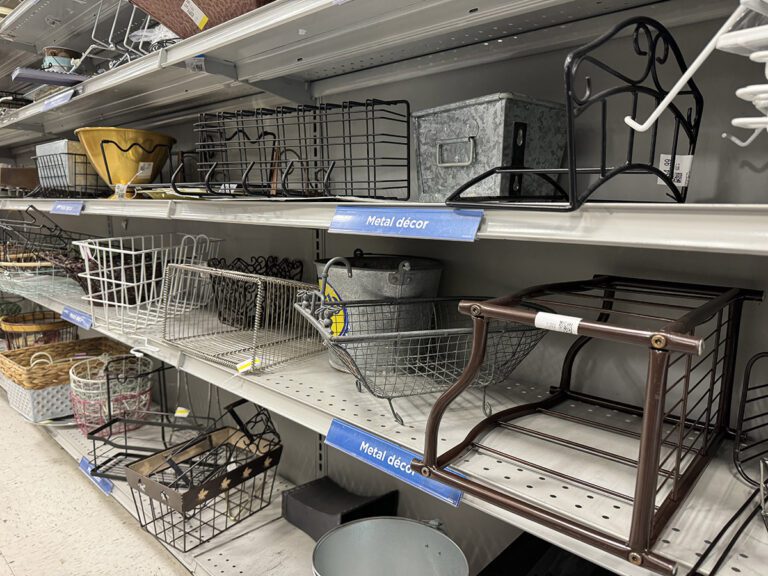Whether you have been teaching for decades or this is your first year, you know that strong classroom management is critical to success. In the art room, classroom management includes more than just behavior management—there is an array of strategies to keep supplies, works-in-progress storage, and art displays running smoothly. It can be helpful to break art classroom management down into five key components: arrangement of the space, routines and procedures, organization, instructional delivery, and expectations and accountability.
As you get ready for the upcoming school year, consider fresh strategies to establish a positive and productive art room environment that will stand the test of time.
How do you handle unexpected behaviors?
Before we dive in, let’s touch on the most common aspect of classroom management—student behavior. Unfortunately, behavior problems have increased across the board. It’s important not to take them personally because there are many shifting factors outside of the art room walls. Even the art teacher with an arsenal of effective strategies will run into an inevitable disruption. Do your best to create conditions that promote positive behaviors and address undesirable behaviors quickly, consistently, and appropriately.
Follow these four steps to manage challenging behaviors:
-
Prioritize safety.
If a student is a danger to themselves or others, take immediate action. Remove dangerous tools, the student, or other students from the classroom as needed. Often, a private conversation and a break in a calm corner can help. Reach out to your professional school counselor and administrator for extra support and to keep them in the loop. -
Share your calm.
Human beings are social creatures. Adopting another person’s words, attitudes, and actions is an instinct embedded through mirror neurons. Respond with a calm voice and kind words to students who are dysregulated or disrespectful. Your calm demeanor can help de-escalate the situation and set a positive example. -
Address causes, not just behaviors.
All behavior is a form of communication. Students who behave inappropriately may not know how to communicate unmet needs. Build strong relationships to identify if these needs are social-emotional, academic, or physiological and provide a safe space for students to talk about them and ask for help. -
Show a path back to success.
Some students may struggle to recover from a poor choice. When they are calm and ready to listen, provide clear, concrete steps to help them return to learning.
Arrangement of the Space
You can set the stage for success before your students enter the classroom. Think carefully about how you arrange furniture and how students will flow through the space. Many conflicts occur simply because students do not have enough personal space or they don’t have clear access to what they need.
Bookmark Art Room Makeover for creative ways to arrange your classroom with lots of attainable DIYs!
Use these three strategies to optimize your space:
-
Cluster tables or desks in pods to facilitate collaborative work.
This also opens up floor space, providing multiple pathways around the room. -
Create a calming corner to help students cool off.
Include fidgets, posters with visual cues, and activities such as neurographic art to aid students in self-regulation. -
Assign spots or numbers for smooth transitions.
Number spaces along a side counter to designate spots where students will line up when they exit your classroom and where they can keep personal items during class. For secondary students, number tables or art supply kits to streamline the moving parts of a bustling studio!
Routines & Procedures
Students often have very limited time in art class. Their schedule may put them in the art room for an hour or less per day or per week. Strong routines build efficiency to maximize that time. At the start of the school year, invest in teaching key routines such as entering the classroom, cleaning up, and lining up. Show and tell students what you expect and then have them practice, much like a fire drill.
Watch Run the Art Room for several videos packed full of tips and tricks to add to your classroom management toolkit.
Try these four routines to keep your classroom running smoothly:
- Build art history exposure and post a student-friendly artist bio from FLEX Curriculum for students to look at, read, and discuss at the beginning of each class.
-
Bring some fun using games like Teacher vs. Students.
-
Use consistent phrasing to cue routines, like “Projects, supplies, sanitize!” This quickly prompts students to store their projects, put away tools and materials, and then clean up.
-
Incorporate a few fun call and responses to garner attention.

Organization
Art teachers juggle countless tasks from storing hundreds of pieces of artwork in all stages of creation to managing supplies for multiple mediums. Plus, the art room can become a dumping ground for well-meaning donations. It can be daunting to keep track of and keep up with everything!
Don’t miss Artfully Organized for tips, tricks, and hacks to bring order to your art room.
Here are two tips for staying organized:
-
Label everything.
Labels on the outside of cabinets, boxes, and bins tell everyone what’s inside without having to open something up. Including a graphic with text helps English language learners and struggling readers. Take your labels to the next level by including a photo of how you want the materials stored when put back correctly. Use a label maker, purchase pre-made ones, or make your own for free with masking tape and a permanent marker! -
Name tables and other landmarks in the room.
Naming a table after a color or an artist allows you to address groups of students sitting together and quickly organize their work. Rather than passing out papers individually, give each table a folder so works-in-progress are easy to collect and distribute. Name large furniture pieces in the room so students can have fun identifying which drying rack you want them to use.
Instructional Delivery
The wonderful part about art is that it’s so hands-on. Think about how your instructional approach reflects this hands-on aspect. Engaging students through a mix of interactive demonstrations, visual aids, and step-by-step explanations can minimize distractions and confusion.
Consider these three strategies to keep students productive and engaged during instruction:
-
Flip your classroom to harness technology.
Embrace Gen Alpha’s tech familiarity. Allow them to use devices to navigate slides, videos, and other resources for self-directed learning. As an added benefit, when students can self-pace their learning, it frees you up to circulate the room more. -
Use movement breaks to promote focus.
It’s increasingly difficult for students to have the stamina to be still and focused for a full class period. Build in opportunities for students to get up and moving. Invite students to come to your table for a quick demonstration or to highlight a peer’s success. -
Provide incentives for whole-body listening.
Individualized feedback can motivate students to stay focused and attentive. Some classes may benefit from stars on a chart, marbles in a jar, or other forms of tallies to earn an incentive.
Expectations & Accountability
Establish clear communication and expectations for routines, processes, artwork requirements, assignment instructions, and more. This tells students what you’re looking for so they can be successful. Reward students who meet or exceed your expectations to build motivation and momentum. When more students have positive experiences in art class, it’s infectious and sets the tone for the whole class! Soon, small extrinsic motivators will grow into pride and self-discipline. When an expectation is not met, quickly address the issue and point out any natural consequences to foster accountability.
Here are three low-cost, high-value reward strategies:
-
Give students “keycards” when they demonstrate responsible care for materials. Keep a cabinet of special art materials that students can access when they turn in their keycards.
-
Distribute a “help pass” when students show kindness above and beyond expectations. Let them redeem the pass for an art room “freebie,” such as skipping cleanup for one day.
-
Pass out awards such as a certificate, sticker, or a handshake to recognize achievements.

Remember, successful classroom management isn’t just about rules and consequences. It’s about creating a positive and supportive environment where all students can thrive. Establish routines, set clear expectations, and consistently reinforce positive behaviors for a successful and fulfilling school year. Experiment with different strategies and find what works best for you and your artists. The time and effort you invest now will allow you to focus on what you do best—inspire creativity and nurture a love of art!
What is your favorite classroom management hack?
How did you successfully manage a challenging behavior in your art room?
Magazine articles and podcasts are opinions of professional education contributors and do not necessarily represent the position of the Art of Education University (AOEU) or its academic offerings. Contributors use terms in the way they are most often talked about in the scope of their educational experiences.









